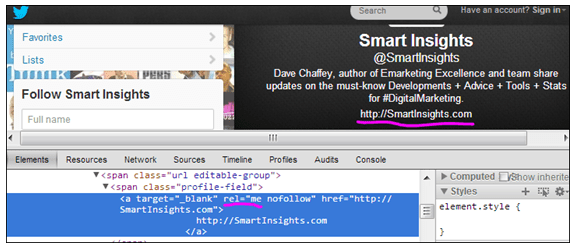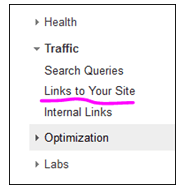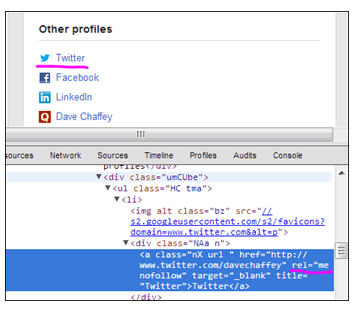Using 'Rel=me ' to tell Google you are YOU.
As an online brand, you would ideally want to have control over your brand name search results pages (SERPs). By control I mean all the results on the first page should ideally be your owned entities, whether it is your website or your company social profile pages.
ASOS are a prime example of this. The online fashion powerhouse pretty much owns its brand SERPs (apart from the blended news & Guardian page), as you will see below:

ASOS brand SERP
Google has little trouble distinguishing that @asos is the genuine ASOS Twitter page because there is an overwhelming number of digital markers indicating that this is the case. The same goes for ASOS’ other profiles that rank on page one. However, not everyone has the authority and following (providing clear digital markers) that ASOS has.
This means that many brands are leaving their digital persona down to Google’s interpretation. Other relevant pages (which you do not control), with content about your brand could creep into your SERP because Google has no confidence that your social entities, are actually your social entities.
A logical way of marrying all your digital entities (website, Twitter, Facebook etc.) together to create your digital brand persona would be to undertake identity consolidation using 'rel=me'.
You may recall that 'rel=me' was prominent in the first verification process for Google authorship. That has since become a much easier process but it’s still worth looking at who uses rel=me and copying their lead.
Use with Twitter
They use rel=me for each profiles bio link.

twitter uses 'rel=me'
It’s also interesting to note that Google does read this link despite it being 'nofollow'. You will often find these links from Twitter appearing in the list of ‘Links to Your Site' in webmaster tools.

Twitter nofollowed bio links appear in this report
It’s also interesting to read the following quote from the guidelines on ‘nofollow’:
With rel='me nofollow', Google will continue to treat the rel='nofollow' as expected for search purposes, such as not transferring PageRank. However, for the Social Graph API, we will count the rel="me" link even when included with a nofollow.
The Social Graph API is now retired but the takeaway here is that Google will count a 'rel=me' link despite a 'nofollow'.
Use with Google+
Google+ uses 'rel=me' in links to other personal profile pages for identity consolidation, to acquire a digital view of a single person.

Google+ use of “rel=me”
It must be pointed out that rel=me' is not adopted on Google+ business pages.
Summary use of 'rel=me' for SEO
By placing 'rel=me' attributes on all your links to your social media profiles (from your own website), it will help search engines like Google understand and have confidence that your social profiles are actually your brand.
In some cases like Twitter, it will be a bidirectional 'rel=me', giving even more assurance that each of your social profiles are your brand.
This will help search engines have more confidence in ranking your external profiles in your brand SERP, given that they will know that your brands social pages are definitely owned by your brand.
It’s worth noting that this is a work around, and the real purpose of the 'rel=me' relationship attribute is to join up a person’s identity and not a ‘thing’s’ identity (in this case a company / brand). It will be interesting to see if in future, a new brand identity attribute is launched for this exact use, in response to the large adoption of company social media profiles over the last few years.
 Thanks to Jimmy McCann for sharing his advice and opinions in this post. Jimmy is Head of SEO at Search Laboratory in Leeds. You can follow him on Twitter or connect on LinkedIn.
Thanks to Jimmy McCann for sharing his advice and opinions in this post. Jimmy is Head of SEO at Search Laboratory in Leeds. You can follow him on Twitter or connect on LinkedIn.







 Thanks to
Thanks to 


